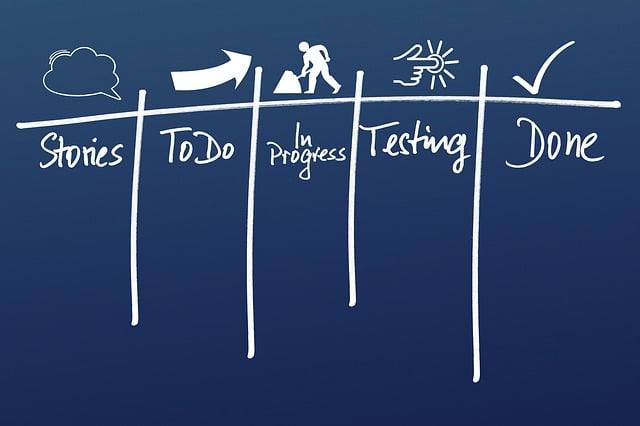Purchase order (PO) financing apps offer businesses a swift, collateral-based solution for capital acquisition, enabling them to fund operations without lengthy loan processes. When choosing an app, prioritize features like real-time PO updates, automated workflows, and robust security. Businesses should prepare by assessing financial health, organizing purchasing records, and evaluating supply chain stability. Applying involves submitting detailed information, with lenders verifying documents and assessing risk transparently. Success is measured through KPIs such as funding speed, cost of financing, and default rates, ensuring efficient operations and data-driven decision-making.
“Unlocking the power of purchase order (PO) financing can revolutionize your business cash flow. This comprehensive guide delves into the essential aspects of PO financing applications, helping businesses navigate this strategic financial tool. From understanding the basics to identifying key features and preparing your company, we offer a step-by-step checklist. Learn what to expect during the application process, discover common challenges, and master tracking KPIs for success. Maximize your PO financing potential with these invaluable insights.”
- Understanding Purchase Order Financing Applications
- Key Features to Look For in a PO Financing App
- Pre-Application Checklist: Preparing Your Business
- What to Expect During the Application Process
- Common Challenges and How to Overcome Them
- Measuring Success: Tracking Key Performance Indicators
Understanding Purchase Order Financing Applications

Purchase order financing applications have become a game-changer for businesses, especially those in need of capital to fuel their growth and operations. These applications allow companies to access working capital by using their outstanding purchase orders as collateral. Understanding this process is crucial for any business looking to optimize its cash flow and gain financial flexibility.
In essence, a purchase order financing application involves presenting your company’s pending purchase orders to a financier or lender. The financier then advances a percentage of the total order value, providing you with immediate funds to cover expenses, hire employees, or invest in inventory. This innovative approach streamlines the traditional funding process, eliminating lengthy loan applications and offering a swift solution for businesses seeking financial support.
Key Features to Look For in a PO Financing App

When evaluating a purchase order (PO) financing application, look for key features that streamline and optimize your supply chain finance processes. Top-tier apps offer real-time visibility into PO status updates, enabling efficient tracking of purchases from inception to settlement. This includes automated notifications for approval workflows, ensuring that every step is clear and well-documented. Additionally, robust security measures like data encryption and multi-factor authentication are non-negotiable to protect sensitive financial information.
Consider apps with intuitive user interfaces designed for ease of use. Simple navigation and clear dashboards help users quickly access critical data without unnecessary complexity. Integration capabilities with existing ERP or accounting software are also essential, ensuring seamless data exchange and reducing manual data entry. Furthermore, advanced analytics and reporting tools empower businesses to make informed decisions by providing actionable insights into purchase order trends, vendor performance, and financial health.
Pre-Application Checklist: Preparing Your Business

Before diving into the purchase order financing application process, it’s crucial to prepare your business for a smooth and successful submission. Start by evaluating your company’s financial health and ensuring all necessary documents are in order. This includes reviewing your balance sheet, income statements, and cash flow projections to demonstrate a strong financial standing. Organize your purchasing history and records, as lenders will want to see a consistent and reliable ordering pattern.
Additionally, assess your supply chain and vendor relationships. Lenders will assess the stability of these partnerships, so be prepared to provide detailed information about long-standing and trustworthy vendors. Lastly, familiarize yourself with the application requirements and criteria specific to purchase order financing. This knowledge will empower you to tailor your application, ensuring all essential elements are included from the outset.
What to Expect During the Application Process

When applying for purchase order (PO) financing, businesses can expect a streamlined process designed to facilitate smooth operations and cash flow management. The initial step involves submitting a comprehensive application that includes company details, financial records, and PO-related information specific to the industry. Lenders will assess the risk associated with the transaction by scrutinizing these documents, ensuring transparency and accuracy are paramount.
During this application process, clear communication is key. Lenders may request additional information or documentation to gain a deeper understanding of the business’s financial health and the viability of the POs being financed. Businesses should be prepared to provide prompt responses and share relevant data, as this collaborative approach enhances the chances of a successful financing outcome.
Common Challenges and How to Overcome Them

Many businesses, especially smaller ones, face common challenges when it comes to purchasing goods or services and managing their cash flow. One of the main hurdles is securing funding for purchase order (PO) financing applications, which can be time-consuming and require a significant amount of paperwork. However, these obstacles can be overcome with careful planning and strategic approaches.
To streamline the process, businesses should first assess their financial position and determine their specific needs. They can then explore various PO financing options, such as traditional bank loans, alternative lenders, or specialized PO financing platforms. Building strong relationships with suppliers and maintaining an organized record-keeping system can also help in navigating this process smoothly. Additionally, understanding the terms and conditions of each financing option is crucial to making informed decisions and ensuring a successful application for purchase order financing.
Measuring Success: Tracking Key Performance Indicators

Measuring success is an integral part of any financial strategy, especially when it comes to purchase order (PO) financing applications. By tracking key performance indicators (KPIs), businesses can gain valuable insights into the efficiency and effectiveness of their PO financing processes. KPIs such as funding speed, which measures the time taken from receiving a PO to securing funds, offer a clear indication of operational agility. Quick funding enables businesses to meet supplier demands promptly, fostering strong supplier relationships and ensuring uninterrupted operations.
Another crucial KPI is the cost of financing, which includes all associated fees and interest rates. Lower costs suggest competitive terms, enhancing cash flow and overall financial health. Moreover, tracking default or rejection rates can highlight potential risks and areas for improvement in the PO financing application process. These metrics collectively contribute to a comprehensive understanding of the program’s performance, allowing businesses to make data-driven decisions and optimize their purchase order financing strategies.






